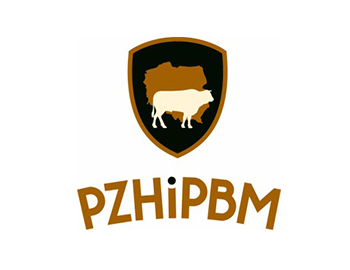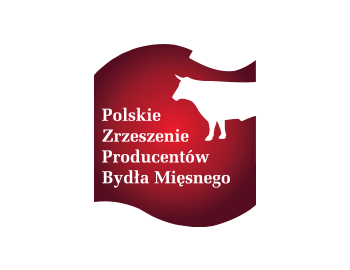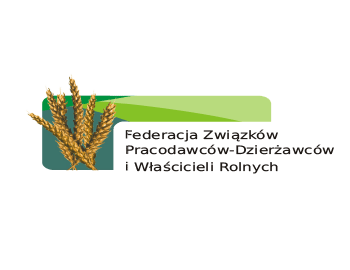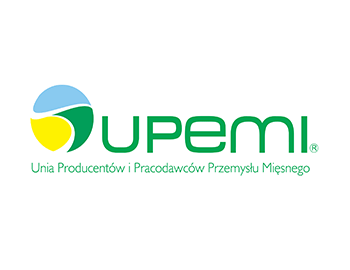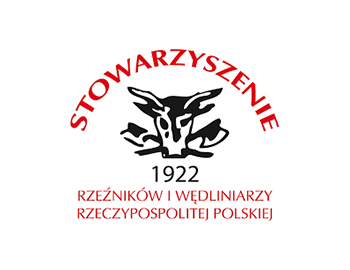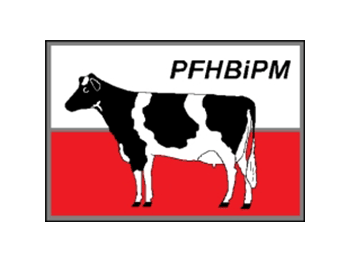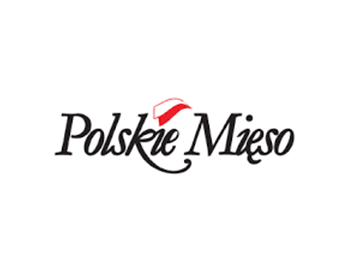


























The EU Commission Regulation (EC) No 1828/2006 imposes an obligation on Polish and European beef producers to require certificates of competence from their employees. In addition, the same act prohibits the killing of animals without prior stunning performed in such a way as to minimise the pain of the animal. Polish producers are also covered by national law, which strictly prohibits the slaughter of cattle outside a slaughterhouse when the animal is healthy but has been involved in an accident. In this case, a certificate from the veterinarian responsible and the owner of the injured animal is required and the meat itself is re-examined before it is placed on the market.

In accordance with the Act of 29 June 2007 on the organisation of breeding and reproduction of farm animals, cattle are monitored, among others, by a system of individually numbered ear tags. This rule excludes cows that have not undergone veterinary checks from the slaughterhouse. The solutions being prepared by the Ministry of Agriculture and Rural Development are to extend supervision to include the obligation to invalidate the passport of an animal which has died or has been killed by order of the Veterinary Inspection within the next few days. The Ministry is also working on the introduction of subcutaneous chips based on Blockchain technology. The device will collect all information about the animal from birth to slaughter. Consideration is also being given to increasing penalties for breaching the rules. The introduction of the proposed amendments to the regulations will completely exclude from the market meat without checks carried out at various stages of production.

Within the EU, the same legislation applies to breeders and producers. In practice, this means adapting the stage of breeding and slaughtering animals to the required EU standards. The taste and quality of our meat was appreciated by consumers from Italy, Germany, France and Great Britain. These countries are the leaders in the import of Polish beef. In order to improve the quality of beef production, the Ministry of Agriculture and Rural Development is working on an amendment to Polish law, which will force producers to raise already high breeding standards. One of the proposed changes is the introduction of 24-hour monitoring in slaughterhouses. The regulation being developed will allow to exclude any actions which are not in compliance with the regulations. As a result, consumers can be sure that only meat of the highest quality will be released to the market.

In accordance with applicable national and EU law, slaughter without prior stunning of the animal is prohibited. At the same time, farmers and producers must avoid fatigue in cattle in the event of injuries such as fractures. The breeding is under constant supervision of a veterinarian. The general trend shows a high and growing concern for the welfare of cattle, and individual breaches of the rules are immediately criticised by the industry. One of the key elements of concern regarding animal welfare is the issue of animal transport. In accordance with the provisions of Council Regulation (EC) No. 1/2005, cattle must be transported in a manner that does not cause injury, suffering or fall. Trucks must be adequately equipped with, among other things, automatic drinking troughs, sufficiently high cages and loading ramps. In addition, where loading and unloading lasts more than four hours, the animals must have access to food and water. It is also recommended to drive calmly and to calculate a route combining short distance with no sharp corners.

Mercosur is an economic organisation founded in South America. The group includes Brazil, Argentina and Paraguay. The trade agreement concluded between the European Union and the Mercosur countries concerns duty-free quotas for local meat, which is to be placed on the EU market. The greatest controversy among the representatives of all meat industries is related to the regulations applied in the local countries. According to the 2018 audit report of the European Commission’s experts, substances banned by EU law are permitted in cattle breeding in Brazil. Moreover, South American cows, unlike Polish cows, are not obliged to have registers of substances administered at the breeding stage, which makes it impossible for veterinarians to diagnose animals effectively. Clear differences in the standards of breeding and production of beef may be dangerous for consumers looking in shops for products of the highest quality, guaranteed by reliable controls and strict legal regulations.

Article 27 of the Act on the protection of animals directly indicates that medical and veterinary treatments are acceptable for saving life or health. The same legal act determines who may undertake treatment of cattle in breeding – legally it is done only by a person with appropriate qualifications, who will perform the treatment in such a way as to reduce the suffering and stress of the animal. Article 16 of the Act on Products of Animal Origin extends the requirements for producers to include a total ban on the release of beef with even trace amounts of medicinal products on the market. If an animal not meeting this condition is slaughtered, the farmer is not entitled to any compensation. Not only cattle, but also drinking water and feed are tested for their medication content.

Numerous quasi-environmental organisations are currently trying to convince consumers that 15,000 litres of water are needed to produce 1 kg of meat. In fact, more than 90% of the water consumed by livestock is “green water” from precipitation. Scientists calculate that the production of 1 kg of beef actually consumes up to a maximum of 50 litres of fresh water.
Contrary to popular belief, beef production is responsible only for a very small fraction of greenhouse gas emissions. According to FAO statistics in the EU, enteric fermentation from the animal husbandry sector associated with the production of methane has reduced its environmental impact by half between 1990 and 2014. According to FAO* data, livestock emissions have decreased by 51%, mainly due to the transition to a more specialised livestock farming system.
It should also be remembered that the contribution of various agricultural sectors to greenhouse gas emissions is not only the domain of beef but also of other agri-food products, including fruit and vegetables, which also need to be heated or cooled down as needed, as well as transported, fertilised and cared for in terms of the high quality of products placed on shop shelves.

In accordance with Article 12 of Council Directive 93/119/EC, sick or injured animals must be slaughtered on the farm. Legal requirements in this respect are absolute for manufacturers who are trying to deviate from the standards adopted. With high production costs, it is not profitable for breeders to risk allowing the slaughter of sick animals. The production process is also supervised by veterinarians, whose permissions and examinations are necessary for Polish meat to finally reach the tables. In some cases, a sick animal may be allowed to be transported, but only if this does not cause further suffering to the animal. Individual cases of breaking the law are met with criticism of the very environment of cattle breeders who care about the reputation and quality of Polish beef on the domestic and foreign markets.

A report from January 2019 from the slaughterhouse in Kalinowo showed a single facility on the scale of the entire national sector. The material presents a case of illegal slaughter of post-traumatic cattle in one of the Polish facilities. Council Regulation (EC) No 1099/2009 clearly lays down rules for the slaughter of animals for slaughter. These rules were deliberately violated by the owner of the facility and the situation was taken care of by national law enforcement agencies. The incidental situation on a national level was immediately criticised by cattle breeders. It was Polish producers who initiated efforts to tighten the penalties for breaking the regulations. The January publication united the whole environment, committed to constantly improving the quality of the meat produced.

The breaches of slaughter regulations detected in January 2019 were incidental in Poland, but unfortunately they also occur in other markets. Several EU countries have also faced similar cases in the past. In December 2017 and October 2018, a gross violation of production standards was detected in two German slaughterhouses during the killing of animals. In November 2018, recordings from the French slaughterhouse Boischaut were published, where the animals were killed without the required stunning. Following the publication, the largest slaughterhouse customers withdrew from further cooperation. In February 2019, Czech veterinarians discovered an illegal meat factory in Prague. Over a ton of meat was found in the slaughterhouse without the required documents and certificates. In October 2019, the Austrian veterinary authorities discovered that the meat unfit for consumption had been sold to 10 countries, including the Czech Republic and Germany. Out of concern for the quality of the entire market, Polish producers sent an open letter to the Members of the European Parliament with an appeal for the unification of EU regulations based on the changes introduced by the Polish Ministry of Agriculture with the support of industry organisations.

In Poland, as in other European countries, in addition to pure-bred meat herds, cattle fattening is also carried out in herds aimed at obtaining milk. Cows which are not intended to be mated with dairy bulls (herd renovation) are inseminated with semen from meat bulls as part of so-called commodity crossbreeding. These bulls, while ensuring appropriate feeding conditions, achieve very high daily gains and a high slaughter yield. These results are largely due to the so-called heterosexia effect, which occurs in the case of inter-breed cross-breeding of cattle. Such cross-breeding achieves a meat quality similar to that of pure-bred meat cattle and is a source of high-quality culinary beef. The production of such beef in dairy herds is an important source of income on Polish farms. Evidence of the high slaughter value of these fattenings is the significant share in the export of Polish beef to EU countries and to third country markets.

According to the quality standards in force in Poland, raw milk is a natural product, obtained in the process of milking healthy cows, as if it were not completed and not deprived of anything. Detailed requirements contained in the Regulation of the Minister of Agriculture and Rural Development of 18 August 2004 on veterinary requirements for milk and milk products (Journal of Laws No. 188, item 1946, as amended) relating to raw milk define the veterinary requirements for the production of milk and milk products. The regulation clearly specifies the hygiene requirements for milking, collection and transport of milk from the farm to the point or establishment. It also regulates production, packaging and labelling requirements. At present, only milk classified in the ‘Extra’ class is collected in Poland. Milk collected from Polish farms may not contain more than 100 000 microorganisms in 1 millilitre, marked with the platelet method at 300 C. It should also not contain added water and have a freezing point at a temperature not exceeding -0.520 C. The skimmed milk should contain a minimum of 28g per litre and at least 8.5% of dry non-fatty matter.

According to Regulation (EC) No 853/2004 of the European Parliament and of the Council of 29 April 2004 laying down specific hygiene rules for food of animal origin, ‘raw milk may not be placed on the market if it contains antibiotic residues in excess of the limits laid down in that Regulation in respect of any of the substances referred to in Annexes I and III to Regulation (EEC) No 2377/90’. The current legal situation in Poland in this area is laid down in the Food and Nutrition Safety Act of 25 August 2006, which recognises as harmful to humans a foodstuff whose consumption under the conditions of use may cause adverse effects on human health and life. All residue limits for pharmacologically active substances (MRLs) are uniform for all countries of the European Union.
In Poland, the Department of Hygiene of Food of Animal Origin of the State Veterinary Institute – State Research Institute in Puławy and all its subordinate Veterinary Hygiene Establishments are responsible for monitoring and supervision. Laboratories operating for the needs of the Polish dairy industry carry out hundreds of thousands of analyses every year to ensure the appropriate quality and safety of dairy products.
In Polish dairy plants, the evaluation of residues of so-called inhibiting substances in samples from a given batch of milk is carried out on the basis of enzymatic and microbiological tests. As part of the monitoring of residues of unacceptable substances, rapid enzymatic tests are used in each batch of raw milk on a so-called ramp. In addition, an assessment of the residues of these substances in samples from each batch of milk from each supplier is carried out every two months or so, using a microbiological test with a very broad spectrum of detection. Moreover, in recent years, a national programme ‘Polish milk free of residues of veterinary medicines and other inhibitory substances’ has been established in Poland, which provides for the establishment of stands on farms to test the above mentioned residues in milk from each cow during milk extraction.
associating
Polish beef and milk producers



